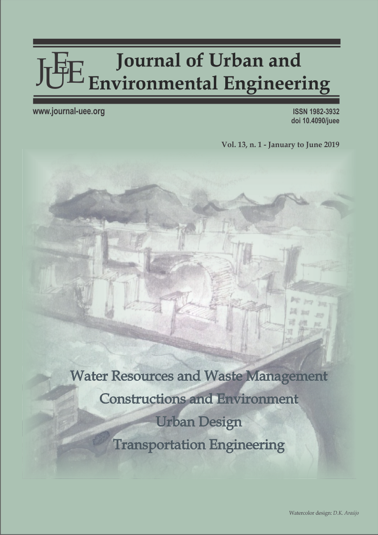INTER-RELATIONSHIP BETWEEN ERODIBILITY, SOIL TOLERANCE AND PYSICAL-CHEMICAL ATTRIBUTES ON NORTHWEST OF SÃO PAULO STATE
DOI:
https://doi.org/10.4090/juee.2019.v13n1.102-114Keywords:
Soil conservation, sustainable management, soil erosion, geostatisticsAbstract
Erosive processes are major environmental problems in soils and constitute a great conservation planning challenge. The knowledge of erodibility and soil loss tolerance, as well as their interactions with physical and chemical attributes of the soil may allow an important diagnostic for sustainable management. The aim of this study was to determine soil erodibility (K) and soil loss tolerance (T) for 32 kinds of soil in the Northwest Region of São Paulo State and assess the linear and spatial correlations between these factors and physical-chemical attributes. The evaluated attributes were: textural relationship (TR), particle density (PD), bulk density (BD), total porosity (TP), macro porosity (MA), micro porosity (MI), water capacity storage (WCS), organic matter (OM) and soil pH (pH). The results showed that K factor ranged from 0.0094 to 0.0758 Mg/ ha MJ mm, while T values ranged from 3.09 to 14.79 Mg /ha year. The erodibility and loss tolerance present significant interaction with the soil physical and chemical attributes, especially with the WCS and the TR that showed the best regression adjustments. In geostatistical point of view, the erodibility and soil loss tolerance also showed considerable spatial correlations with most soil physical properties, especially interactions with the TP and the TR, allowing the best mappings using cokriging technique. Thus, simple and relatively low cost approach preliminary soil erodibility can be adopted for large areas without complexes surveys and in situ tests. As well as long term climate data series, a common situation in large areas in less developed countries.Downloads
Download data is not yet available.
Downloads
Published
2019-10-05
Issue
Section
Articles




